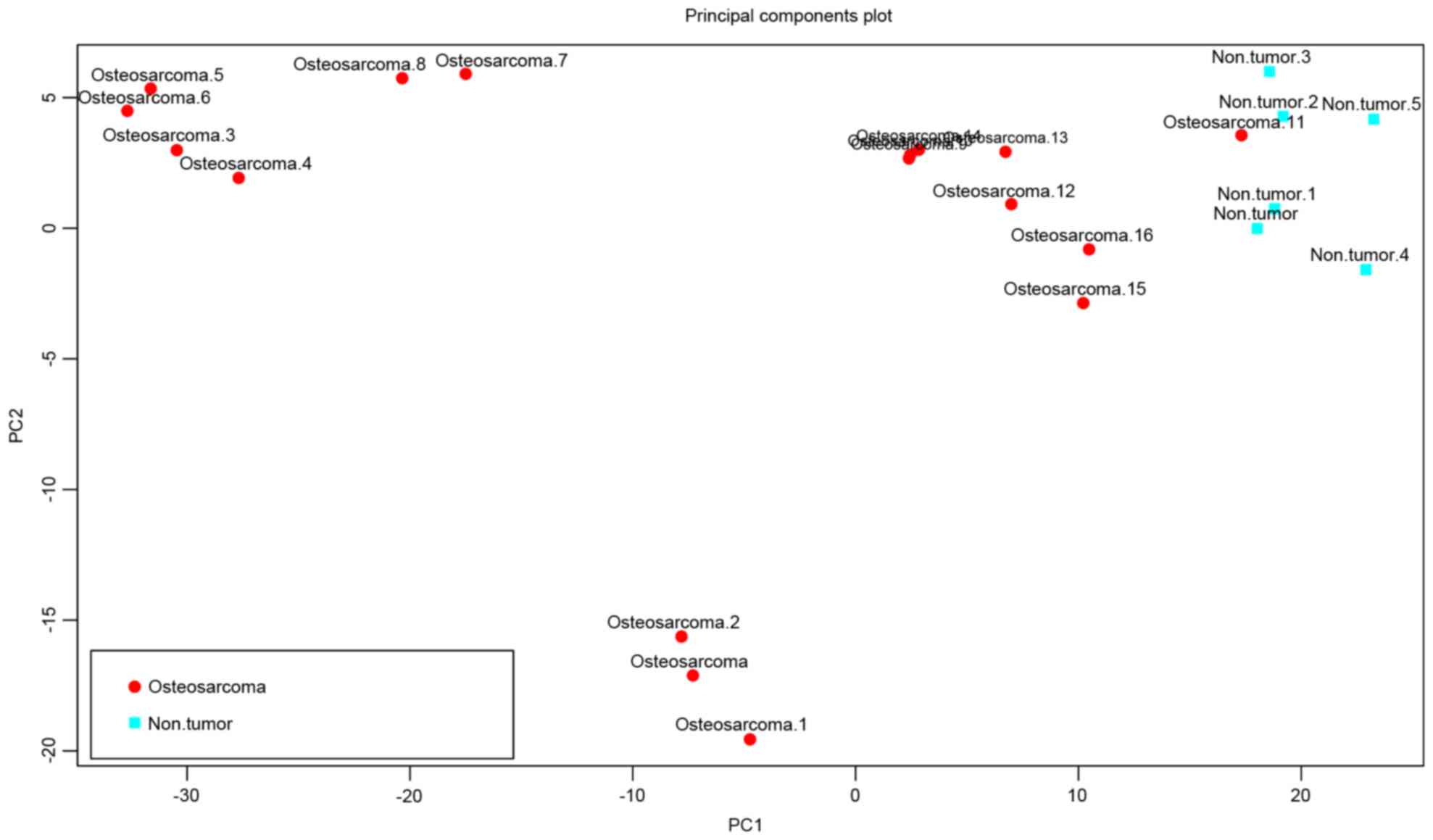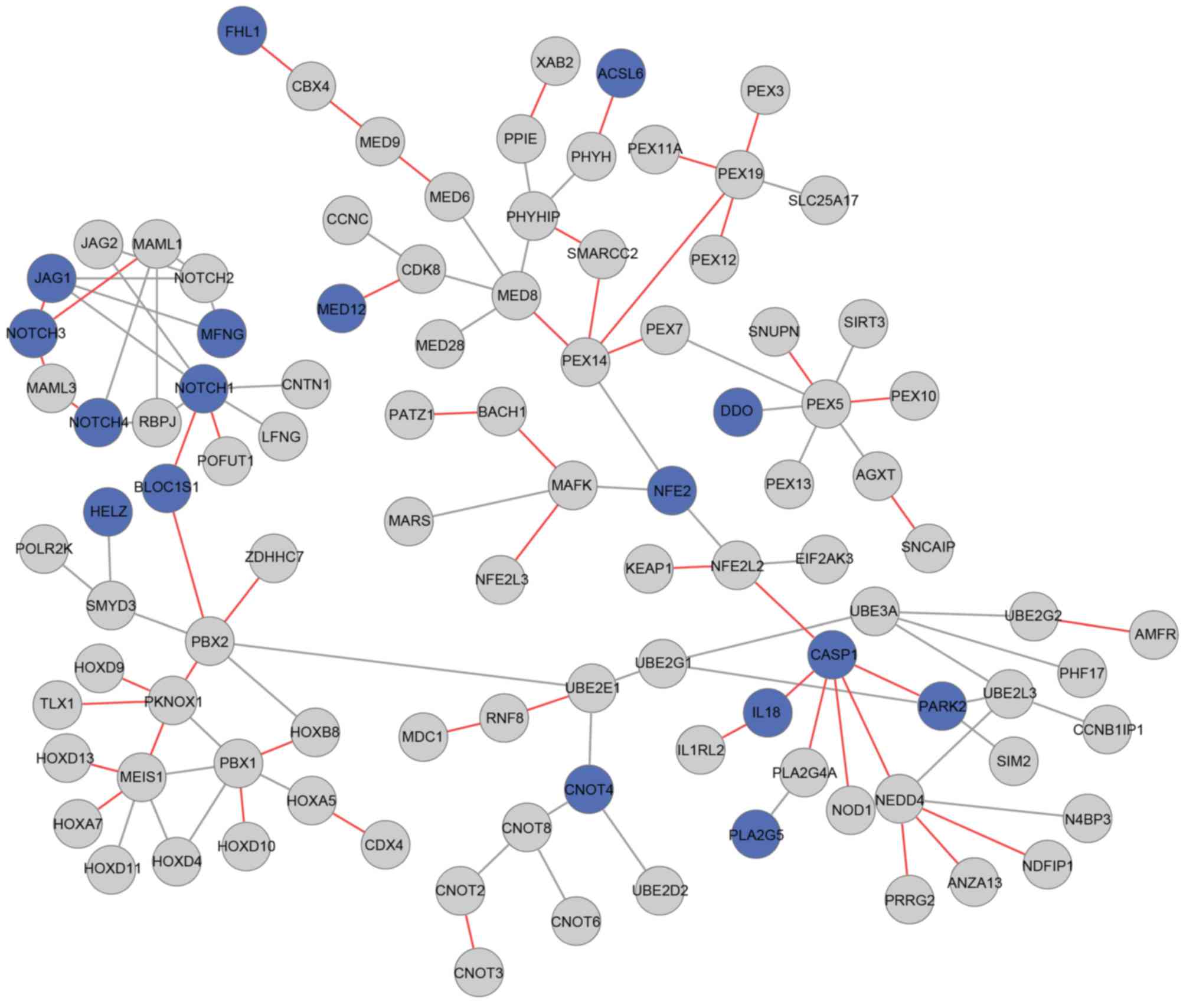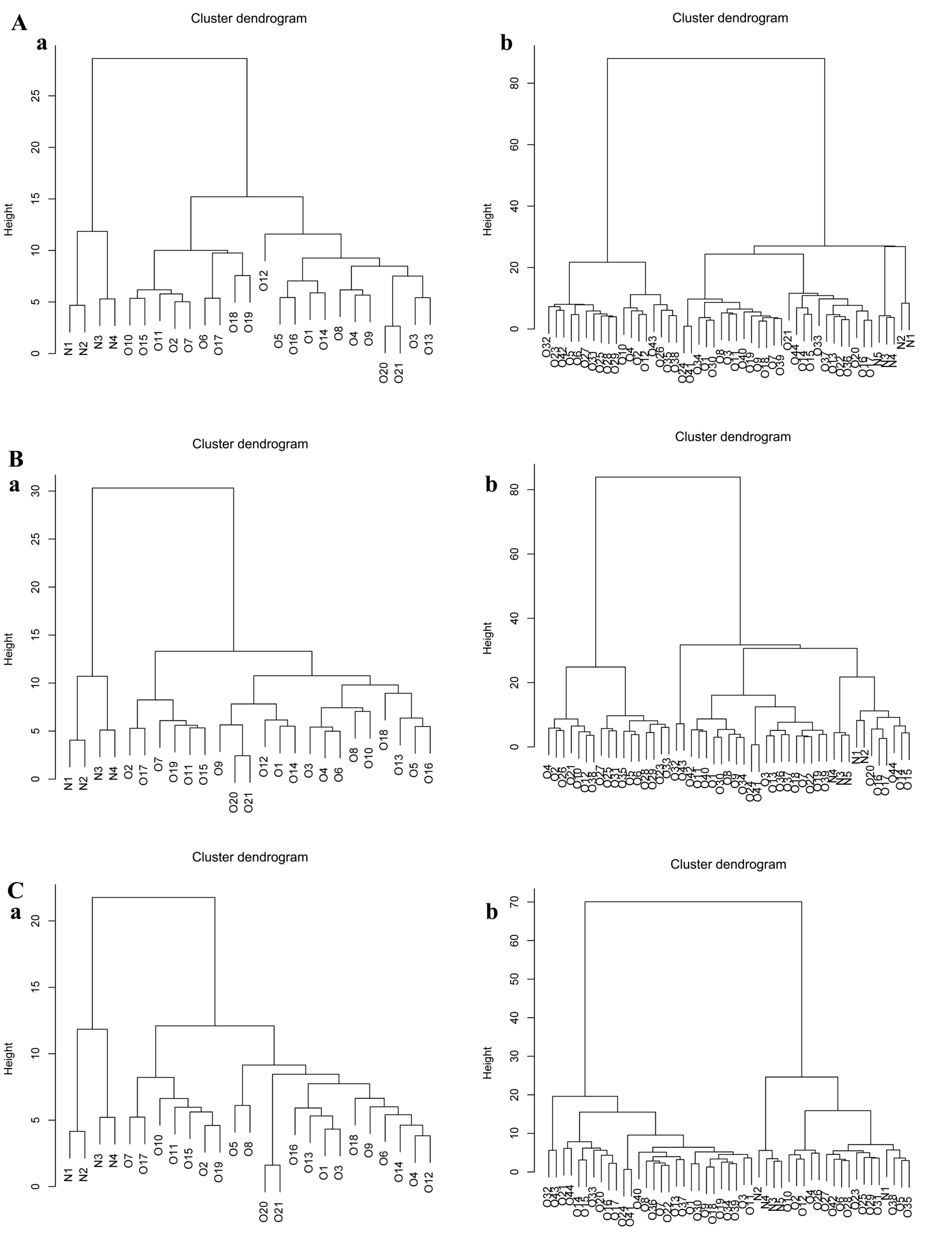|
1
|
Mirabello LJ, Yeager M, Mai PL,
Gastier-Foster JM, Gorlick R, Khanna C, Patiño-Garcia A,
Sierrasesúmaga L, Lecanda F, Andrulis IL, et al: Abstract 5574:
High prevalence of germline TP53 mutations in young osteosarcoma
cases. Cancer Res. 75 Suppl:S55742015. View Article : Google Scholar
|
|
2
|
Mirabello L, Troisi RJ and Savage SA:
Osteosarcoma incidence and survival rates from 1973 to 2004: Data
from the surveillance, epidemiology, and end results program.
Cancer. 115:1531–1543. 2009. View Article : Google Scholar : PubMed/NCBI
|
|
3
|
Lussier DM, Johnson JL, Hingorani P and
Blattman JN: Combination immunotherapy with α-CTLA-4 and α-PD-L1
antibody blockade prevents immune escape and leads to complete
control of metastatic osteosarcoma. J Immunother Cancer. 3:212015.
View Article : Google Scholar : PubMed/NCBI
|
|
4
|
Carrle D and Bielack S: Osteosarcoma lung
metastases detection and principles of multimodal therapyPediatric
and Adolescent Osteosarcoma. Springer; New York, NY: pp. 165–184.
2010
|
|
5
|
Betts JA, French JD, Brown MA and Edwards
SL: Long-range transcriptional regulation of breast cancer genes.
Genes Chromosomes Cancer. 52:113–125. 2013. View Article : Google Scholar : PubMed/NCBI
|
|
6
|
Hall MA, Verma SS, Wallace J, Lucas A,
Berg RL, Connolly J, Crawford DC, Crosslin DR, De Andrade M, Doheny
KF, et al: Biology-driven gene-gene interaction analysis of
age-related cataract in the eMERGE network. Genet Epidemiol.
39:376–384. 2015. View Article : Google Scholar : PubMed/NCBI
|
|
7
|
Kallberg H, Padyukov L, Plenge RM,
Ronnelid J, Gregersen PK, van der Helm-van Mil AH, Toes RE,
Huizinga TW, Klareskog L and Alfredsson L: Epidemiological
Investigation of Rheumatoid Arthritis study group: Gene-gene and
gene-environment interactions involving HLA-DRB1, PTPN22 and
smoking in two subsets of rheumatoid arthritis. Am J Hum Genet.
80:867–875. 2007. View
Article : Google Scholar : PubMed/NCBI
|
|
8
|
Seddighzadeh M, Korotkova M, Källberg H,
Ding B, Daha N, Kurreeman FA, Toes RE, Huizinga TW, Catrina AI,
Alfredsson L, et al: Evidence for interaction between
5-hydroxytryptamine (serotonin) receptor 2A and MHC type II
molecules in the development of rheumatoid arthritis. Eur J Hum
Genet. 18:821–826. 2010. View Article : Google Scholar : PubMed/NCBI
|
|
9
|
Park J, Kim I, Jung KJ, Kim S, Jee SH and
Yoon SK: Gene-gene interaction analysis identifies a new genetic
risk factor for colorectal cancer. J Biomed Sci. 22:732015.
View Article : Google Scholar : PubMed/NCBI
|
|
10
|
Shen Y, Xun G, Guo H, He Y, Ou J, Dong H,
Xia K and Zhao J: Association and gene-gene interactions study of
reelin signaling pathway related genes with autism in the Han
Chinese population. Autism Res. 9:436–442. 2016. View Article : Google Scholar : PubMed/NCBI
|
|
11
|
Wang YR, Jiang K, Feldman LJ, Bickel PJ
and Huang H: Inferring gene-gene interactions and functional
modules using sparse canonical correlation analysis. Ann Appl Stat.
9:300–323. 2015. View Article : Google Scholar
|
|
12
|
Kresse SH, Rydbeck H, Skårn M, Namløs HM,
Barragan-Polania AH, Cleton-Jansen AM, Serra M, Liestøl K,
Hogendoorn PC, Hovig E, et al: Integrative analysis reveals
relationships of genetic and epigenetic alterations in
osteosarcoma. PLoS One. 7:e482622012. View Article : Google Scholar : PubMed/NCBI
|
|
13
|
Endo-Munoz L, Cumming A, Sommerville S,
Dickinson I and Saunders NA: Osteosarcoma is characterised by
reduced expression of markers of osteoclastogenesis and antigen
presentation compared with normal bone. Br J Cancer. 103:73–81.
2010. View Article : Google Scholar : PubMed/NCBI
|
|
14
|
Paoloni M, Davis S, Lana S, Withrow S,
Sangiorgi L, Picci P, Hewitt S, Triche T, Meltzer P and Khanna C:
Canine tumor cross-species genomics uncovers targets linked to
osteosarcoma progression. BMC Genomics. 10:6252009. View Article : Google Scholar : PubMed/NCBI
|
|
15
|
Grace C and Nacheva EP: Significance
analysis of microarrays (SAM) offers clues to differences between
the genomes of adult Philadelphia positive ALL and the lymphoid
blast transformation of CML. Cancer Inform. 11:173–183. 2012.
View Article : Google Scholar : PubMed/NCBI
|
|
16
|
McClure R, Balasubramanian D, Sun Y,
Bobrovskyy M, Sumby P, Genco CA, Vanderpool CK and Tjaden B:
Computational analysis of bacterial RNA-Seq data. Nucleic Acids
Res. 41:e1402013. View Article : Google Scholar : PubMed/NCBI
|
|
17
|
McDermott JE, Diamond DL, Corley C,
Rasmussen AL, Katze MG and Waters KM: Topological analysis of
protein co-abundance networks identifies novel host targets
important for HCV infection and pathogenesis. BMC Syst Biol.
6:282012. View Article : Google Scholar : PubMed/NCBI
|
|
18
|
Subelj L and Bajec M: Unfolding
communities in large complex networks: Combining defensive and
offensive label propagation for core extraction. Phys Rev E Stat
Nonlin Soft Matter Phys. 83:0361032011. View Article : Google Scholar : PubMed/NCBI
|
|
19
|
Liu W, Yue F, Zheng M, Merlot A, Bae DH,
Huang M, Lane D, Jansson P, Lui GY, Richardson V, et al: The
proto-oncogene c-Src and its downstream signaling pathways are
inhibited by the metastasis suppressor, NDRG1. Oncotarget.
6:8851–8874. 2015. View Article : Google Scholar : PubMed/NCBI
|
|
20
|
Bartolomé RA, García-Palmero I, Torres S,
López-Lucendo M, Balyasnikova IV and Casal JI: IL-13 receptor α2
signaling requires a scaffold protein, FAM120A, to activate the FAK
and PI3K pathways in colon cancer metastasis. Cancer Res.
75:2434–2444. 2015. View Article : Google Scholar : PubMed/NCBI
|
|
21
|
Correction: Associations and Interactions
between Ets-1 and Ets-2 and Coregulatory proteins, SRC-1, AIB1, and
NCoR in breast cancer. Clin Cancer Res. 21:2190–2191. 2015.
View Article : Google Scholar : PubMed/NCBI
|
|
22
|
Guarino M: Src signaling in cancer
invasion. J Cell Physiol. 223:14–26. 2010.PubMed/NCBI
|
|
23
|
Hu C, Deng Z, Zhang Y, Yan L, Cai L, Lei J
and Xie Y: The prognostic significance of Src and p-Src expression
in patients with osteosarcoma. Med Sci Monit. 21:638–645. 2015.
View Article : Google Scholar : PubMed/NCBI
|
|
24
|
Sonaglio V, De Carvalho AC, Toledo SR,
Salinas-Souza C, Carvalho AL, Petrilli AS, de Camargo B and Vettore
AL: Aberrant DNA methylation of ESR1 and p14ARF genes could be
useful as prognostic indicators in osteosarcoma. Onco Targets Ther.
6:713–723. 2013.PubMed/NCBI
|
|
25
|
McIntyre JF, Smith-Sorensen B, Friend SH,
Kassell J, Borresen AL, Yan YX, Russo C, Sato J, Barbier N, Miser
J, et al: Germline mutations of the p53 tumor suppressor gene in
children with osteosarcoma. J Clin Oncol. 12:925–930. 1994.
View Article : Google Scholar : PubMed/NCBI
|
|
26
|
Song R, Tian K, Wang W and Wang L: P53
suppresses cell proliferation, metastasis, and angiogenesis of
osteosarcoma through inhibition of the PI3K/AKT/mTOR pathway. Int J
Surg. 20:80–87. 2015. View Article : Google Scholar : PubMed/NCBI
|
|
27
|
Stossi F, Barnett DH, Frasor J, Komm B,
Lyttle CR and Katzenellenbogen BS: Transcriptional profiling of
estrogen-regulated gene expression via estrogen receptor (ER) alpha
or ERbeta in human osteosarcoma cells: Distinct and common target
genes for these receptors. Endocrinology. 145:3473–3486. 2004.
View Article : Google Scholar : PubMed/NCBI
|
|
28
|
Yi F, Amarasinghe B and Dang TP: Manic
fringe inhibits tumor growth by suppressing Notch3 degradation in
lung cancer. Am J Cancer Res. 3:490–499. 2013.PubMed/NCBI
|
|
29
|
Li R, Zhang W, Cui J, Shui W, Yin L, Wang
Y, Zhang H, Wang N, Wu N, Nan G, et al: Targeting BMP9-promoted
human osteosarcoma growth by inactivation of notch signaling. Curr
Cancer Drug Targets. 14:274–285. 2014. View Article : Google Scholar : PubMed/NCBI
|
|
30
|
Guo Y and Kyprianou N: Restoration of
transforming growth factor beta signaling pathway in human prostate
cancer cells suppresses tumorigenicity via induction of
caspase-1-mediated apoptosis. Cancer Res. 59:1366–1371.
1999.PubMed/NCBI
|
|
31
|
Whyte M: ICE/CED-3 proteasesin apoptosis.
Trends Cell Biol. 6:245–248. 1996. View Article : Google Scholar : PubMed/NCBI
|


















